Alexei Ashikhmin
No Analog Combiner TTD-based Hybrid Precoding for Multi-User Sub-THz Communications
Jun 17, 2024Abstract:We address the design and optimization of real-world-suitable hybrid precoders for multi-user wideband sub-terahertz (sub-THz) communications. We note that the conventional fully connected true-time delay (TTD)-based architecture is impractical because there is no room for the required large number of analog signal combiners in the circuit board. Additionally, analog signal combiners incur significant signal power loss. These limitations are often overlooked in sub-THz research. To overcome these issues, we study a non-overlapping subarray architecture that eliminates the need for analog combiners. We extend the conventional single-user assumption by formulating an optimization problem to maximize the minimum data rate for simultaneously served users. This complex optimization problem is divided into two sub-problems. The first sub-problem aims to ensure a fair subarray allocation for all users and is solved via a continuous domain relaxation technique. The second sub-problem deals with practical TTD device constraints on range and resolution to maximize the subarray gain and is resolved by shifting to the phase domain. Our simulation results highlight significant performance gain for our real-world-ready TTD-based hybrid precoders.
Smart Hybrid Beamforming and Pilot Assignment for 6G Cell-Free Massive MIMO
Oct 11, 2022



Abstract:This paper investigates Cell-Free massive MIMO networks, where each access point (AP) is equipped with a hybrid transceiver, reducing the complexity and cost compared to a fully digital transceiver. Asymptotic approximations for the spectral efficiency are derived for uplink and downlink. Capitalizing on these expressions, a max-min problem is formulated to optimize the (i) analog beamformer at the APs and (ii) pilot assignment. Simulations show that the optimization of these variables substantially increases the network performance.
Two-Stage Channel Estimation Approach for Cell-Free IoT With Massive Random Access
Sep 28, 2021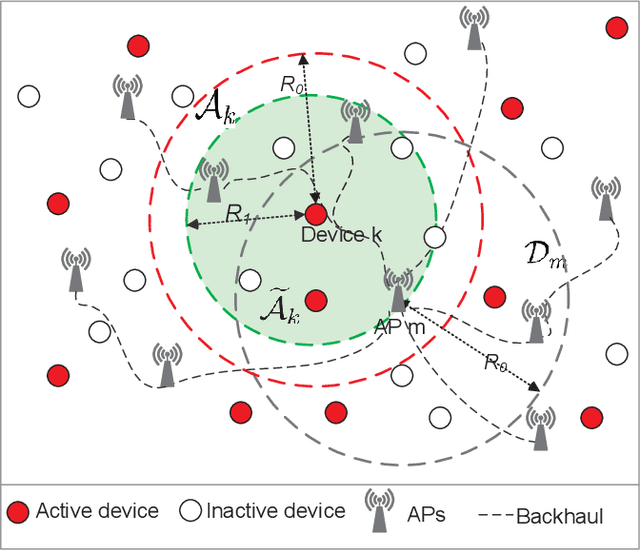
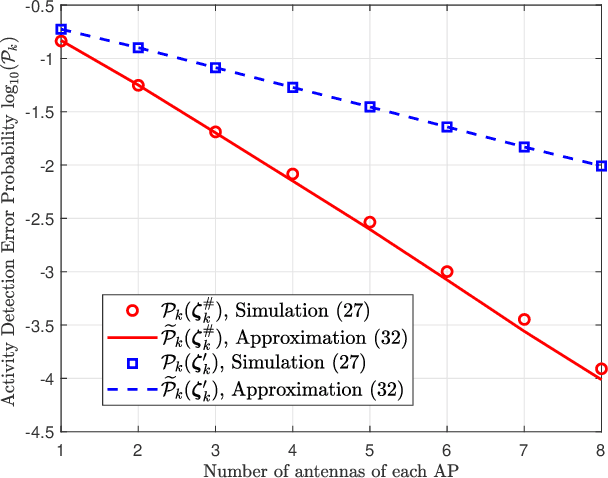
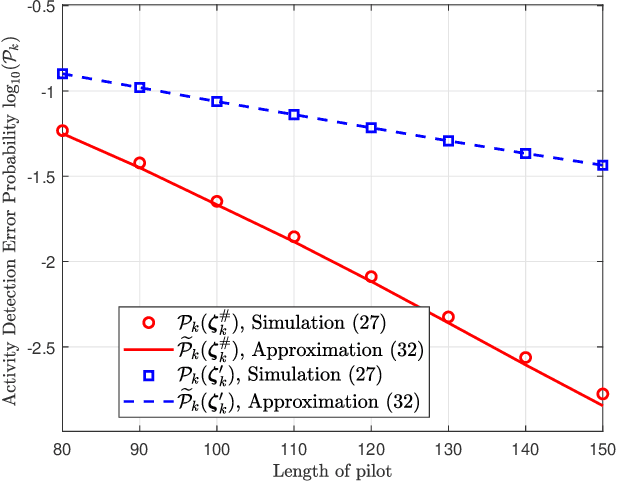
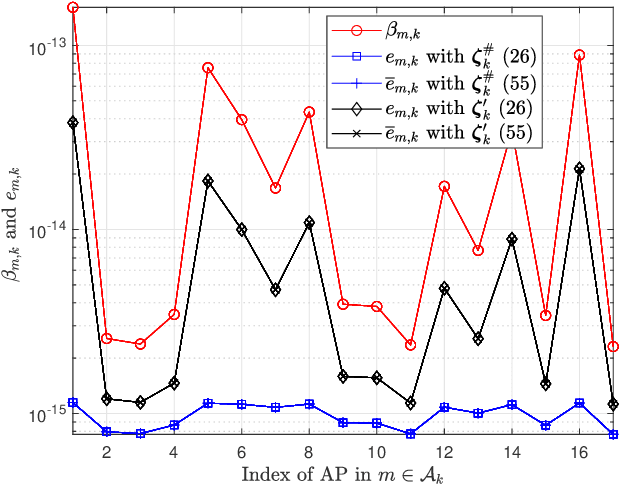
Abstract:We investigate the activity detection and channel estimation issues for cell-free Internet of Things (IoT) networks with massive random access. In each time slot, only partial devices are active and communicate with neighboring access points (APs) using non-orthogonal random pilot sequences. Different from the centralized processing in cellular networks, the activity detection and channel estimation in cell-free IoT is more challenging due to the distributed and user-centric architecture. We propose a two-stage approach to detect the random activities of devices and estimate their channel states. In the first stage, the activity of each device is jointly detected by its adjacent APs based on the vector approximate message passing (Vector AMP) algorithm. In the second stage, each AP re-estimates the channel using the linear minimum mean square error (LMMSE) method based on the detected activities to improve the channel estimation accuracy. We derive closed-form expressions for the activity detection error probability and the mean-squared channel estimation errors for a typical device. Finally, we analyze the performance of the entire cell-free IoT network in terms of coverage probability. Simulation results validate the derived closed-form expressions and show that the cell-free IoT significantly outperforms the collocated massive MIMO and small-cell schemes in terms of coverage probability.
Can Massive MIMO Support URLLC?
Feb 23, 2021



Abstract:We investigate the feasibility of using Massive MIMO to support URLLC in both coherence interval based and 3GPP compliant pilot settings. We consider grant-free uplink transmission with MMSE receiver and adopt 3GPP channel models. In the coherence interval based pilot setting, by extensive system level simulations, we find that using a Massive MIMO base station with 128 antennas and MMSE receiver, URLLC requirements can be achieved in Urban Macro (UMa) Non-Line of Sight (NLoS) with orthogonal pilots and Neyman-Pearson detector. However, in the 3GPP compliant pilot setting, even by using the covariance matrix of Physical Resource Block (PRB) subcarriers for active UE detection and channel estimation as well as open-loop power control, we find that URLLC requirements are still challenging to achieve due to the insufficient pilot length and pilot symbol location regulations in a PRB.
Unequal Error Protection Achieves Threshold Gains on BEC and BSC via Higher Fidelity Messages
Jan 22, 2021
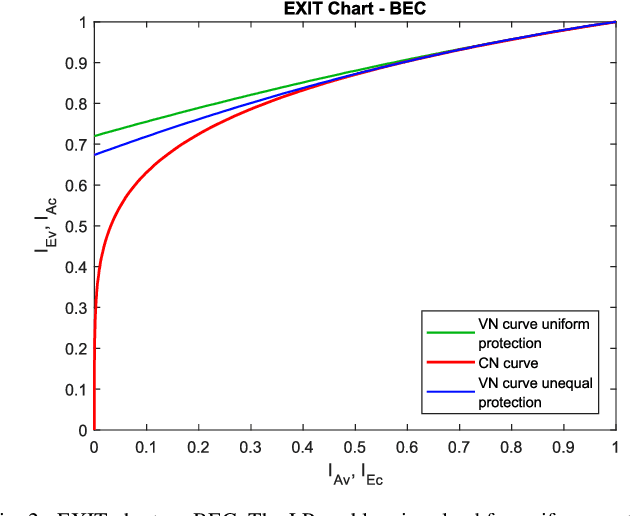
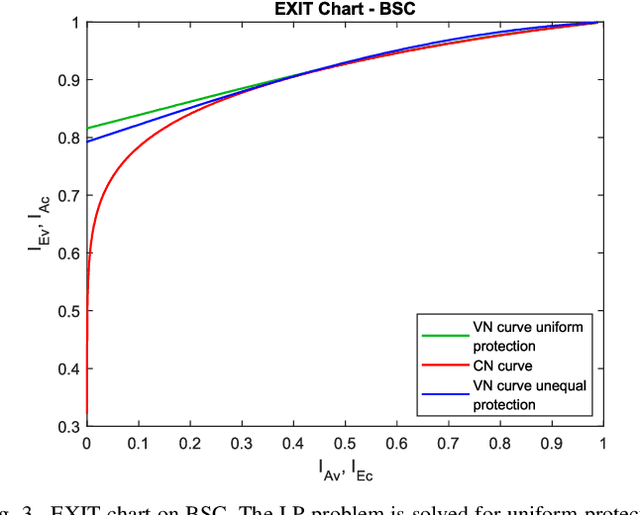

Abstract:Because of their capacity-approaching performance, graph-based codes have a wide range of applications, including communications and storage. In these codes, unequal error protection (UEP) can offer performance gains with limited rate loss. Recent empirical results in magnetic recording (MR) systems show that extra protection for the parity bits of a low-density parity-check (LDPC) code via constrained coding results in significant density gains. In particular, when UEP is applied via more reliable parity bits, higher fidelity messages of parity bits are spread to all bits by message passing algorithm, enabling performance gains. Threshold analysis is a tool to measure the effectiveness of a graph-based code or coding scheme. In this paper, we provide a theoretical analysis of this UEP idea using extrinsic information transfer (EXIT) charts in the binary erasure channel (BEC) and the binary symmetric channel (BSC). We use EXIT functions to investigate the effect of change in mutual information of parity bits on the overall coding scheme. We propose a setup in which parity bits of a repeat-accumulate (RA) LDPC code have lower erasure or crossover probabilities than input information bits. We derive the a-priori and extrinsic mutual information functions for check nodes and variable nodes of the code. After applying our UEP setup to the information functions, we formulate a linear programming problem to find the optimal degree distribution that maximizes the code rate under the decoding convergence constraint. Results show that UEP via higher fidelity parity bits achieves up to about $17\%$ and $28\%$ threshold gains on BEC and BSC, respectively.
 Add to Chrome
Add to Chrome Add to Firefox
Add to Firefox Add to Edge
Add to Edge